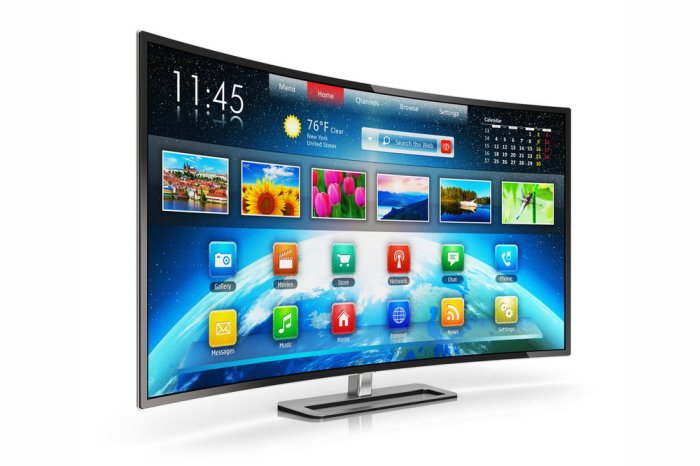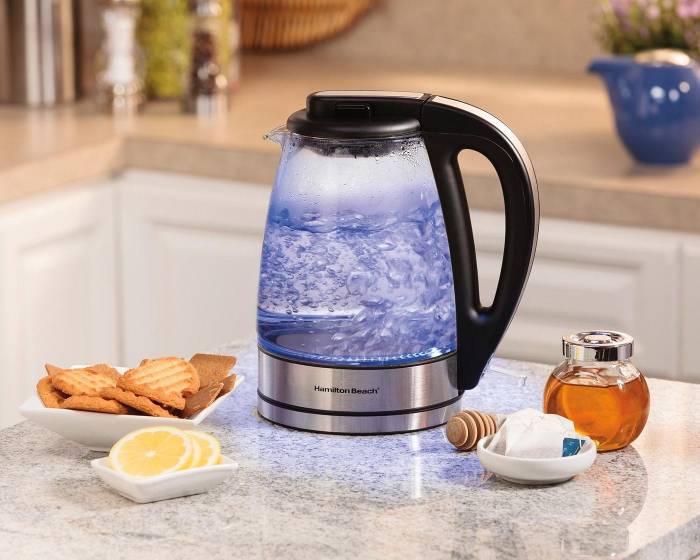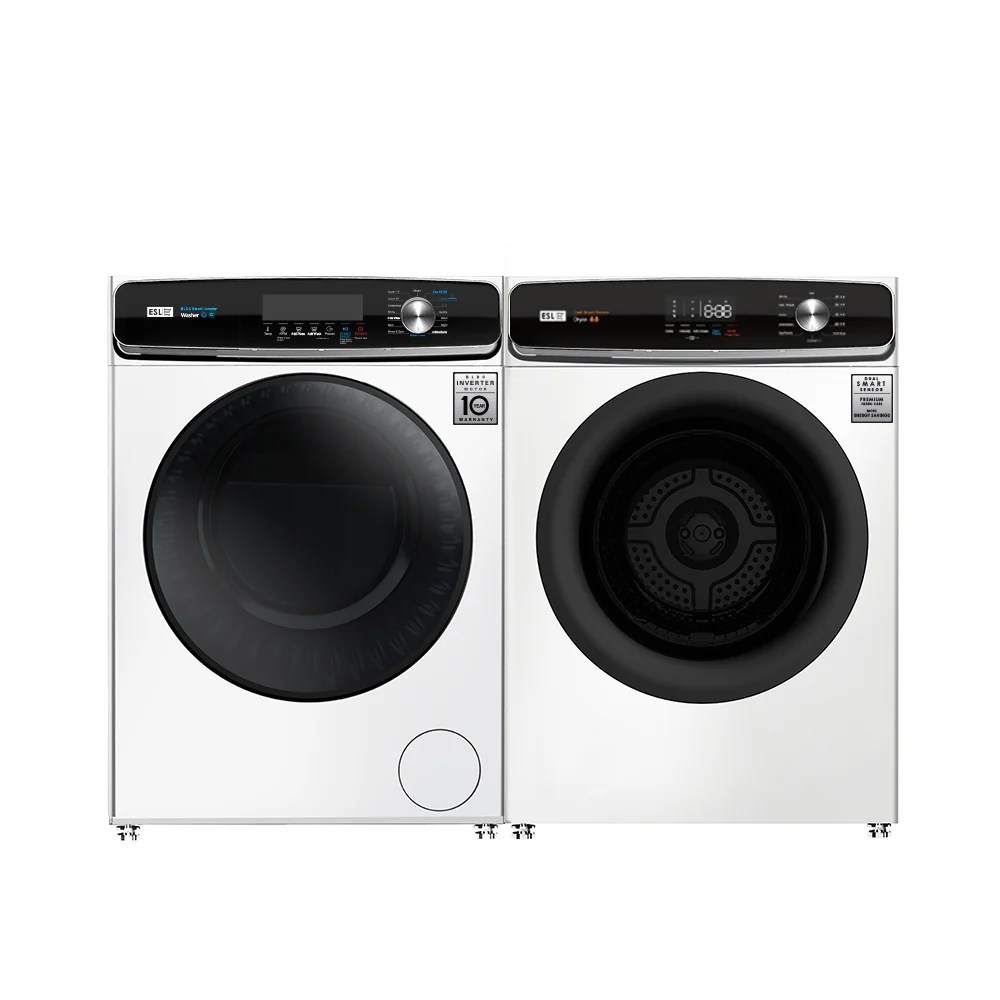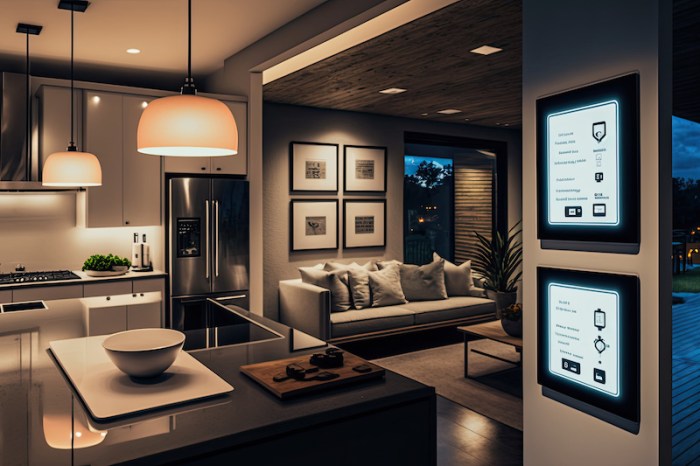
Welcome to the realm where your TV is smarter than your average bear! Smart TVs have strolled into our living rooms like the cool kid at school, revolutionizing how we consume entertainment with a flick of the remote. Gone are the days of squinting at grainy images and wrestling with tangled cords; today’s Smart TVs are sleek, sophisticated, and ready to stream your heart out.
With a myriad of features that set them apart from traditional TVs, Smart TVs are like the Swiss Army knives of home entertainment. They bring you everything from streaming services galore to seamless integration with your smart home devices, making them the ultimate sidekick in your quest for the perfect movie night or gaming marathon.
Smart TVs Overview
Smart TVs have soared in popularity over the last decade, transforming the way we consume entertainment at home. Once just a box that brought us the news and our favorite sitcoms, today’s smart TVs are like tiny internet-connected computers that come with more apps than your smartphone and probably more features than your last car. They’ve become the centerpiece of our living rooms, often serving as a portal to endless streaming, gaming, and social media.The evolution from traditional TVs to Smart TVs has been nothing short of spectacular.
Traditional TVs were limited to cable or antenna signals and occasionally a VCR if you were feeling fancy. Now, Smart TVs allow for seamless connectivity to the internet, enabling viewers to binge-watch their favorite shows, play games, and even control home devices, all from the comfort of their couch. This shift has made home entertainment more interactive and personalized than ever before.
Key Features of Smart TVs
Smart TVs come packed with features that differentiate them from their traditional counterparts. These features elevate the viewing experience, making it more immersive and convenient. A few noteworthy features include:
- Internet Connectivity: The ability to connect to Wi-Fi allows viewers to access streaming services like Netflix, Hulu, and YouTube with just a few clicks. Gone are the days of waiting in line at Blockbuster!
- Voice Control: Many Smart TVs come with built-in voice assistants like Alexa, Google Assistant, or their very own proprietary voice recognition systems, so you can change the channel without lifting a finger. Just don’t ask it to play your ex’s favorite show, unless you want a drama!
- App Ecosystem: Smart TVs offer a variety of downloadable apps tailored specifically for entertainment. Whether it’s games, music, or social media, there’s an app for everything. It’s like having a mini-playground right in your living room.
- Screen Mirroring: This feature allows users to mirror content from their mobile devices straight onto the TV screen, perfect for showcasing that vacation slideshow no one wanted to see.
- High-Definition Displays: Many Smart TVs come equipped with 4K and even 8K resolution, offering stunning visuals that can make even your old family videos look like a blockbuster movie.
All these features come together to create an entertainment package that appeals to a wide audience, from casual viewers to hardcore gamers.
Leading Brands and Models
In the competitive world of Smart TVs, several brands stand out, each offering a range of models to cater to various preferences and budgets. Here’s a look at some of the market leaders and their flagship models:
- Samsung: Known for its QLED technology, Samsung’s flagship models like the QN900A offer stunning picture quality and vibrant colors, making it a favorite among home cinema enthusiasts.
- Loewe: This luxury brand combines high-end design with state-of-the-art technology. The Loewe bild i series is a stunning piece of art that doubles as a Smart TV.
- Sony: The A90J OLED is recognized for its brilliant color accuracy and deep blacks, ideal for movie lovers who appreciate a cinematic experience at home.
- LG: The LG C1 OLED is a top performer in the gaming category, boasting features like low input lag and variable refresh rates, making it perfect for competitive gamers.
- TCL: Known for offering great value, TCL’s 6-Series provides impressive performance without breaking the bank, making it a popular choice for budget-conscious consumers.
These brands continue to innovate, ensuring that Smart TVs remain at the forefront of technological advancements in home entertainment.
Smart TVs and Home Appliances Integration
Imagine a world where your TV does more than just binge-watch your favorite shows; it transforms into a central hub for all your home appliances! With the magical powers of smart technology, your Smart TV can now communicate with everything from your fridge to your lights, creating an ecosystem that even the Jetsons would envy. Welcome to the future where convenience is just a remote control away!Smart TVs are the Swiss Army knives of home entertainment, seamlessly integrating with a variety of smart devices to create a cohesive smart home experience.
Whether it’s dimming the lights for movie night, adjusting the thermostat for comfort, or even checking the status of your security cameras—all with a few clicks on your TV remote—this technological wonder has got your back. Let’s dive into how you can set up this connectivity and turn your living room into the command center of your home!
Guide to Setting Up Smart TV Connectivity with Home Devices
To unlock the full potential of your Smart TV, you need to connect it to your other smart home devices. This isn’t just a simple pairing; it’s a dance of digital harmony. Here’s a step-by-step guide to getting your Smart TV in sync with your home appliances:
1. Choose a Smart Hub
Invest in a smart hub (like Amazon Echo or Google Nest Hub) if your Smart TV isn’t already equipped with smart home integration capabilities. This will act as the translator for all your devices.
2. Connect to Wi-Fi
Ensure your Smart TV and all smart devices are connected to the same Wi-Fi network. It’s like getting everyone at the party on the same group chat—no one likes being left out!
3. Download Necessary Apps
Install the required apps for your smart devices on your Smart TV. For example, if you have smart lights, download their specific app to manage them from your TV.
4. Link Accounts
Log into your smart device accounts on your Smart TV. This might involve a bit of typing, so prepare your fingers for a workout.
5. Set Up Voice Control
If your Smart TV supports voice commands, activate this feature. Imagine telling your TV, “Dim the lights,” and it obligingly obeys like a well-trained puppy!
6. Create Routines
Use your Smart TV to set up routines that synchronize your devices. For instance, a “Movie Time” routine could turn off the lights, lower the blinds, and start your streaming service, all at once! This integration can lead to an enhanced living experience where you can manage everything from your couch. By spreading your digital wings, you can elevate your home automation to superhero levels!
Enhancing Home Applications with Smart TVs
Smart TVs can be more than just entertainment devices; they can significantly boost the efficiency and security of your home. Here are some nifty methods to use your Smart TV for enhancing other home applications:
Security Camera Integration
By connecting your Smart TV to your home security system, you can monitor live feeds directly on your screen. Picture yourself watching the latest blockbuster while keeping an eye on your front porch—talk about multitasking!
Energy Monitoring
Certain smart TVs can display energy usage stats from compatible devices. By keeping an eye on your energy consumption, you can make informed decisions about usage, potentially lowering your bills. “Looks like the fridge is working overtime; let’s give it a break!”
Smart Thermostat Control
Adjust your thermostat settings right from your TV interface. Imagine snuggling under a cozy blanket while telling your Smart TV, “Set the temperature to a toasty 72 degrees”—your comfort zone awaits!
Entertainment Synchronization
Control your smart speakers and sound systems directly from your Smart TV. Want to blast that theme song from your favorite show? With a few clicks, your entire living room can turn into a concert hall.
Notifications and Reminders
Set reminders or notifications to pop up on your Smart TV, like “Time to water the plants!” Now, your TV is not just a visual feast but a helpful assistant as well.
With smart integration, your Smart TV becomes the maestro, orchestrating a seamless symphony of home automation.
By embracing these integration techniques and functionalities, your Smart TV can elevate your home into a smart haven, merging convenience, security, and efficiency into one delightful package. Welcome to a future where your television is the epicenter of your domestic bliss!
Enhancing Your Home Entertainment with Smart TVs

Optimizing your Smart TV isn’t just about connecting to Wi-Fi and praying for the best. It’s an adventure in sound and vision that can take your binge-watching experience from “meh” to “wow, I need to call my friends!” Let’s dive into the best practices for maximizing your audio and video quality, explore the streaming services that’ll make your TV the star of the living room, and discover how to transform your Smart TV into a gaming powerhouse.
Optimizing Smart TV Settings for Audio and Video Quality
To ensure you’re not left watching your favorite episodes in murky sound and pixelated glory, adjusting your Smart TV settings is crucial. Here are some guidelines to help you achieve that cinematic experience right in your living room:
- Calibrate Your Picture Settings: Use built-in calibration tools or a calibration disc to adjust brightness, contrast, and color settings. Remember, if your TV looks like it’s stuck in a 90s sitcom, it’s time for a change!
- Choose the Right Picture Mode: Most Smart TVs offer modes like Standard, Movie, or Vivid. For a true cinematic experience, stick with Movie mode, as it’s usually tuned for the best quality.
- Audio Adjustment: If your TV has an equalizer, play with the settings to find the best sound mix. Not all sound is created equal—your action movie deserves booming bass while a rom-com might call for more treble.
- Enable HDR: If your TV supports High Dynamic Range, turn it on. It dramatically enhances contrast and color for a more vibrant picture. Think of it as adding a sprinkle of magic to your viewing experience.
- Check Connectivity: Use high-speed HDMI cables for the best video and audio quality. Don’t let a cheap cable be the reason your picture looks like a watercolor painting instead of a blockbuster!
Comparison of Streaming Services Compatible with Smart TVs
Choosing the right streaming service can feel like trying to pick a favorite child. Each service has its perks, so let’s break down the major players in the streaming game:
| Service | Content Variety | Unique Features |
|---|---|---|
| Netflix | Original shows, movies, documentaries; vast library | Offline downloads, personalized recommendations |
| Amazon Prime Video | Originals, rentals, and a mix of older films | Free shipping on Amazon, option to rent/buy titles |
| Hulu | Current TV shows, original content, movies | Next-day access to popular shows, ad-free option |
| Disney+ | Disney classics, Marvel, Star Wars, National Geographic | GroupWatch feature for virtual watch parties |
| Apple TV+ | Original content and limited library | Integration with Apple devices, family sharing |
Using Smart TVs for Gaming
Smart TVs are not just for streaming; they can also provide an exhilarating gaming experience. With the right accessories and setup, you can transform your living room into a gaming arena. Here’s how to level up your gaming on a Smart TV:
- Connect Your Console: Whether it’s a PlayStation, Xbox, or Nintendo Switch, make sure to use HDMI inputs and select the appropriate picture mode for gaming. You want your enemies to look crisp, not fuzzy!
- Consider a Gaming-Optimized TV: If you’re serious about gaming, look for TVs with low input lag and high refresh rates. Features like Game Mode ensure your gaming experience is smooth and responsive.
- Invest in Quality Accessories: A good gaming headset can immerse you in the action, while a comfortable gaming chair can prevent back strain during those marathon sessions. Remember, comfort is key when you’re saving the world!
- Wireless Controllers: Bluetooth controllers can cut down on cables and clutter. Plus, no one wants to trip over a wire while trying to execute a perfect jump!
Last Recap

In conclusion, Smart TVs are more than just fancy screens—they’re your ticket to a smarter, more entertaining home! With their impressive features and connectivity options, they don’t just show you content; they immerse you in an experience that transforms your living space into a hub of fun and relaxation. So, grab some popcorn and get ready to binge-watch like never before!
Key Questions Answered
What are Smart TVs?
Smart TVs are television sets equipped with internet connectivity, allowing you to stream content, browse the web, and run apps just like your smartphone.
Can I use my Smart TV without the internet?
Yes, you can still watch traditional cable or antenna broadcasts, but you’ll miss out on all the smart features and streaming services.
Do Smart TVs need updates?
Absolutely! Regular updates help fix bugs, enhance performance, and add new features, so keep that TV fresh and updated!
Can I connect my Smart TV to other devices?
Yes, Smart TVs can connect to a variety of devices like gaming consoles, Blu-ray players, and even smart home devices for a fully integrated experience.
Are Smart TVs good for gaming?
They sure are! Many Smart TVs come with low latency modes and high refresh rates, making them great for an immersive gaming experience.





